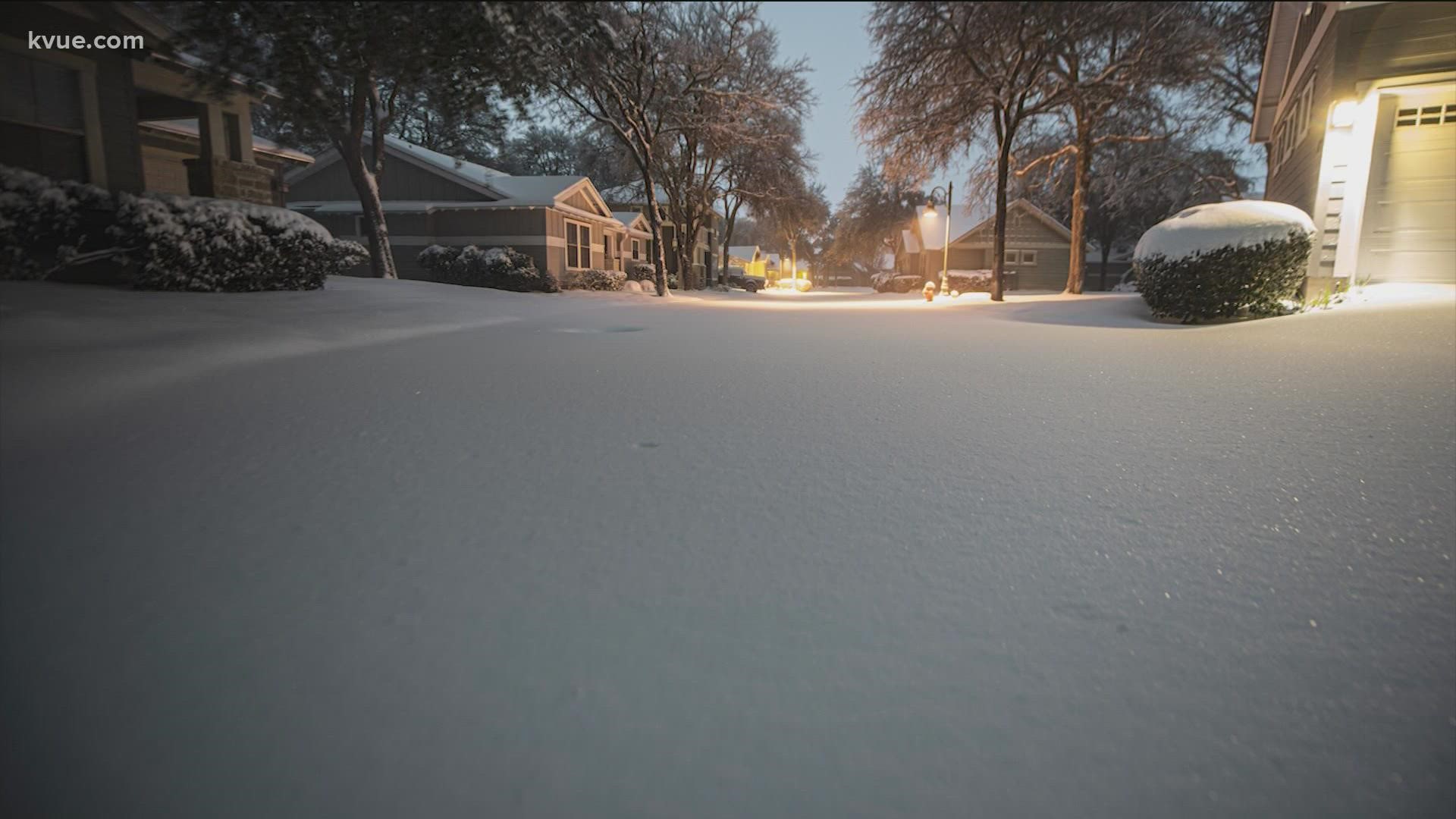AUSTIN, Texas — Austin-Travis County leaders have released a report detailing 132 recommendations to "ensure the community is better prepared and better served for the next major emergency" following Winter Storm Uri this past February.
The report noted numerous "key incident challenge areas" where Central Texas was impacted during the winter storm, including food access, water, medical, sheltering, transportation and leadership and coordination.
"I think the big take away is really looking at how all the systems that underpin our daily lives are connected," said Dr. Joshua Rhodes, a research associate at the Webber Energy Group at University of Texas at Austin. "So a lot of the talk out of the state has been more about the energy sector, the electricity sector, the gas sector. But, I mean, the storm really affected many different sectors – water transportation, food, being able to get to doctors' visits and things like that. And so, I mean, the report is more comprehensive in that looking at how do we protect all the infrastructure that underpins our daily lives?"
Among the key recommendations are:
- Revised planning assumptions to account for multiple-hazard events with cascading impacts and infrastructure failure
- Coordination with critical stakeholders about the potential for adding resilient water infrastructure for hospitals and City and County facilities
- Identifying a list of shelters with durable infrastructure, including heating, ventilation and air conditioning (HVAC); spaces to accommodate large groups; backup power; and water
- Developing a comprehensive disaster feeding plan
- Determining practical solutions for stockpiling or accessing enough shelf-stable meals and water for targeted distribution
- Selecting locations that can function as medical shelters
- Identifying cost-effective solutions for upgrading public safety vehicle fleet to function in various weather events
- Developing a transportation plan for vulnerable populations
- Implementing a revised roadway clearing plan for winter storms
- Evaluating the government's inventory of snow and ice removal materials in the Austin-Travis County area
"Winter Storm Uri was terrible for thousands of people across Travis County, especially those who suffered without electricity, water, gas, and/or food," Travis County Judge Andy Brown said. "I am so thankful for those across the community who sacrificed so much to help others. I look forward to working with the County, cities and community to prepare for future storms and disasters.”
“Last winter, we were tested like never before. In a natural disaster of such a large scale, we saw how important it was for our community to come together and help one another – separate and in addition to the actions of public entities,” Austin Mayor Steve Adler said. “Both County and City staff worked tirelessly during the storm. Still, there are many lessons to learn so, in the future, we better recognize, support and institutionalize the important and necessary grassroots aspect of our community’s emergency response.”
Here is a look at statistics gathered in the report from Winter Storm Uri:
- 254 counties in Texas – the whole state – were under a disaster declaration
- 6 degrees Fahrenheit was the record-low temperature in Austin
- 6.4 inches of snow – broke the record for consecutive days of snow on the ground in Austin
- 144 hours of freezing temperatures
- 2,449 calls to Austin Fire Department reporting private site plumbing breaks
- 739 traffic accidents responded to by Austin Fire Department
- 1,100 people sheltered during the storm
- 5 million bottles of water and 120,000 shelf-stable meals distributed by Austin-Travis County
- 100,000+ calls to the City of Austin’s Utility Customer Care Center about power outages
"I think we really need to take a look at those major systems, our energy system being one. "If our homes had been heated during that time, we probably wouldn't have had as many water leaks and things like that ... and we wouldn't have had failures in our water system. If we'd have had more than one storms worth of road salt and things like that, we might have been able to have better transport throughout the city," said Rhodes. "We did have two storms. A lot of people forget we had a storm a few weeks before where we used up all the salt because we usually only keep enough around for one day, because that's usually what we get, if even that. But really taking a hard look at those and seeing where can we do better."
Read the full report here.
Austin Energy and Austin Water also conducted internal assessments of their infrastructure, operations and communications during the storm and are already implementing actions to prepare for the coming winter season. View Austin Energy’s report here and Austin Water’s report here.
City council will discuss the report in its Nov. 4 meeting and the Travis County Commissioners Court will discuss winter preparedness plans during a future meeting.
PEOPLE ARE ALSO READING:

